Scottish Highland Thatching (a' Tugadh)
Training and Consultancy
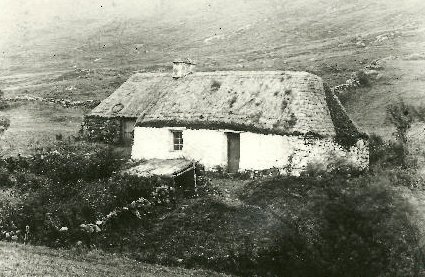
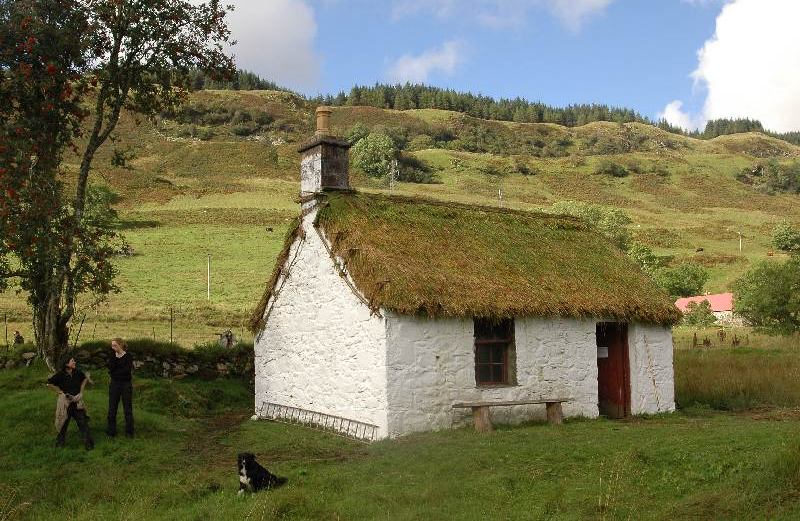

Based in Perthshire
About the Scottish styles of thatching
Scottish thatching (Highlands' and Islands' styles) are quite different from what most people would think of as a thatched house, which is in fact an English and Scottish Lowland style. Lowland Scottish and English styles are very similar - they both use cuilc (water reed / Norfolk reed) or perhaps wheat straw. These materials are quite rare in the Highlands, hence our use of about six other materials:
- Fraoch - heather
- Luachar - rashes / soft rush
- Muran - marram grass
- Bun dubh raineach - the black foot of bracken
- Random thatch oat straw
- Black oat straw (directional thatch)
- Bealaidh - broom
- Cuilc (in some places)
I thatch in the above materials with the exception of Oat Straw and Muran which are no longer available in viable quantities and quality. Sorry about that, but I don't control the growing of the materials. You might.
I thatch in the following styles:- Hip roof (black and white photo above)
- Gable / duo pitch roof (white house in photo above)
- Conical roof (as in Celtic round-house)
- Skye styles
- Argyll Style, with stitched ridge
- Mainland Highland Style
- Lowland style using cuilc (reed / phragmites). This is what most people think of as a thatched cottage.
I also build, repair or advise on the build of the roof timbers themselves, beyond the thatch alone. This involves other aspects unique to Scottish styles:
- Crupan - couples / cruck frame
- Sgrothan - turf divot under-thatch
- Cabairean - cabers
- Sugan - ropes, nets and stones
- Sgolpan - the hand-made, cleaved hazel staples that secure ropes and thatch
The thatching work that I do currently
- Small rethatching projects such as garden pavillions, routine maitenance and small repairs.
- Thatching projects within the Lothians, Lanarkshire, Perthshire, Angus, Stirling and Argyllshire i.e. within two hours or so of Perth.
- Pre-purchase and insurance surveys of thatched roofs across the whole of Scotland.
- Training in thatching skills at my own site (near Crieff, Perthshire).
- Training for property owners and managers on their own building (mainland Scotland only).
- I prioritise Highlands work over Lowland styles as so few thatchers maintain Highland properties.
Work I am not currently undertaking
- Work in the Hebrides, inner or outer, and the northern isles: It's too expensive and impractical.
- Repairs and rethatching on properties above one storey unless the client is supplying a scaffolding. (My own scaffolding is for our traditional single storey buildings only.)
Traditional ethos
Given that I mostly work on heritage buildings, I only use traditional materials in the roof. I do not use stainless steel screw-ties, galvanised rods, plastic string, membranes etc. This is important if your roof is of scheduled / listed status. It is also important for the health of the roof and its environmental impact. I also do not promote the use of cuilc (reed) in areas where it is not part of the vernacular style, such as the Highlands, but I do promote the use of Scottish-grown reed in the Lowlands of Scotland and north England, where it is appropriate.
Generally, the way I approach thatching is to use the materials and techniques that were used when this style of building was common, which sometimes involves put a building back the way it was designed to be by removing historically inappropriate and unsustainable inclusions.
Where possible, I reinstate the human context that would have supported the building's maintenance, such as training property keepers and developing sources of local thatch materials. We think it's important to rethatch a Scottish roof in the local or original style, applying the ancient 500 Yard Rule: if you can't build a house from materials fairly close to the site then you're moving out of the local style and into higher costs and other vernacular styles. It's not always possible to stick to the 500 yard rule, but it's a good start point. Often cuilc / water reed is imported from Eastern Europe nowadays. I only use Scottish reed (where reed is the appropriate material for the building). You'll want to ask about and consider this when looking for a thatcher.
Community Group Projects
A good part of my work is for community groups, NGOs and the like, wishing to use a thatching project to engage and skill the public or staff in revitialising a building or creating a new outdoor, covered workspace. See the video.
A video about a community garden thatching project (a Celtic round house).
Before
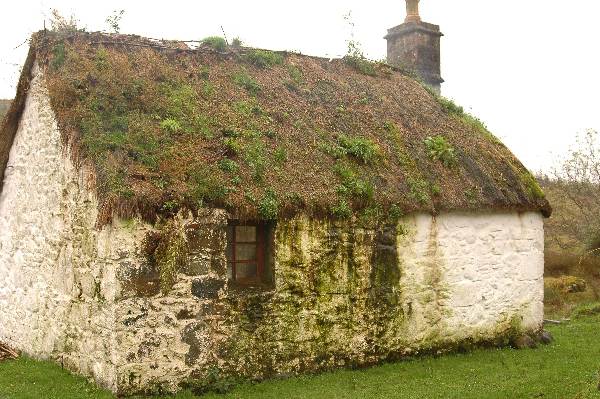
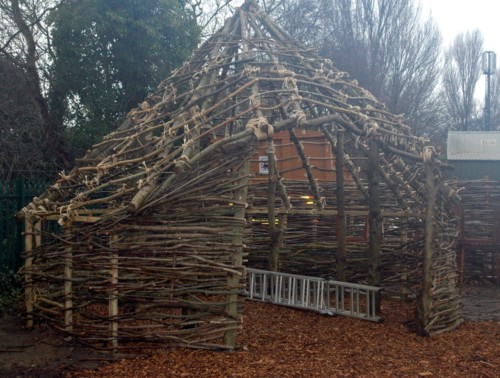
Argyllshire traditional luachar thatch dwelling from 1850s ~ ~ ~ ~ A new build Celtic roundhouse for a community group space
During
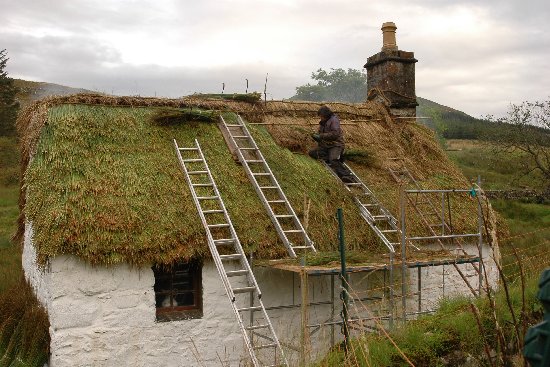
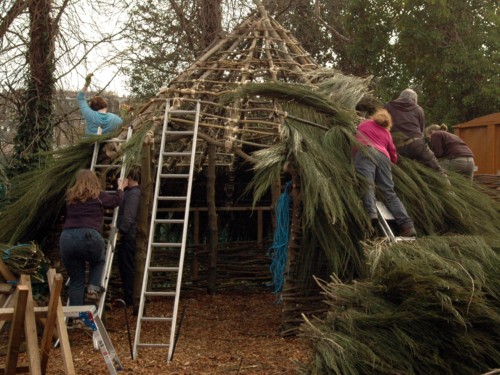
and After
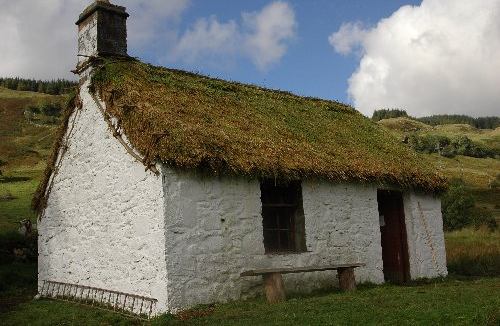
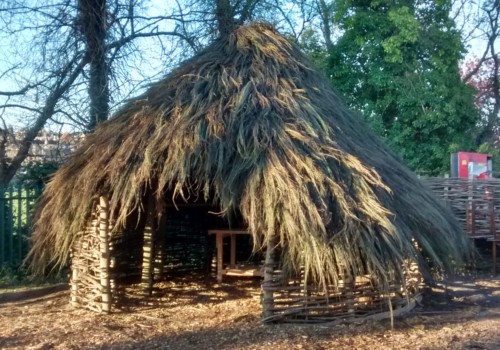
A luachar thatch (rush) when new ~~ A bealaidh thatch (broom) when new
Who We Are
We work as a team of two thatchers, myself (Scot AnSgeulaiche) and Fiona Weaver MacDougall. I currently have an apprentice and a couple of crew, depending on availability.
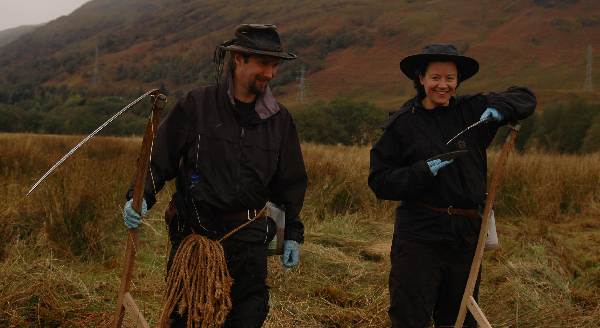
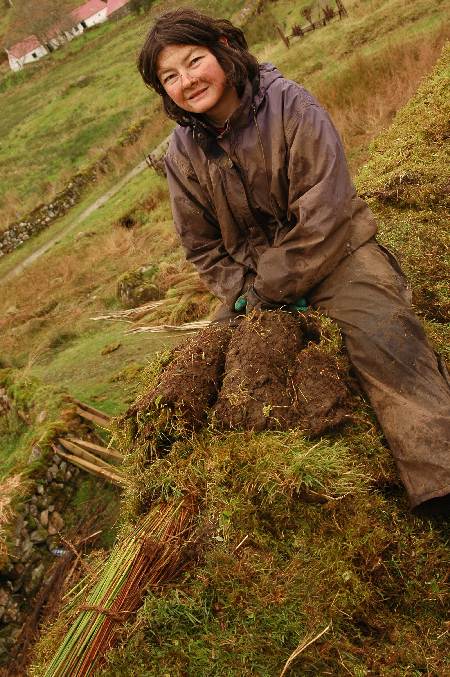
I trained with the late Jim Souness, who trained with Duncan Matheson (Duncan Stalcair) and Gaelic-speaking thatchers from Tiree. In keeping with the Highland tradition, we're not "Master Thatchers" the way the trade has in England. The Highlands didna really have such, historically speaking. Houses were maintained communally, by rotation within the townships. Today we have about six professional thatchers in Scotland (although a very small number of owners still maintain their own thatch, as we used to do).
What does thatching a roof cost?
Thatch is not the cheap option! Typically a small highland cottage will cost £5000-8000 for ath-tughadh (dressing thatch) and £10,000-12,000 for a complete rethatch, both dependent on materials, location, state of the existing roof and so on. That's about £100-150 per sqm.
If you are considering a thatch project, here are two things that make a big difference to the cost, at least for my jobs:
- Is there free, basic accommodation close to the site? Two weeks of B&B accommodation for a team could be a four figure sum. Camping or some dry barn in which to sleep, a place to cook food, a place to dry wet clothing overnight, a shower is all that is required.
- Where is the thatch material to come from? Is it easily accessible locally? And is it of good quality? Only one of the half-dozen thatch materials used in Scotland is available to buy off the peg, the rest are wild-gathered. 50% of the cost of a thatch job is the material. If it is of poor quality or difficult to source then that cost goes up a lot.
Salient points
- Thatch is put onto a roof structure that has been designed for thatch. It cannot successfully be added to a roof designed for slate, tin, tile etc. without some rebuilding. If you are wanting a thatch newbuild, talk to me about the roof structure before you engage and architect or build it.
- Following the above, if you are wanting to convert your existing roof to thatch, I advise against it. You can do anything with enough money, but a cottage conversion is going to cost you £10-20,000, which is probably a lot more than you thought.
- Thatch materials are seasonally available. Most require more than a year's notice to source. If you are an organisation with yearly funding rounds, keep that in mind.
- A thatched house used to exist within a cultural context of materials' supply and local skills. That context of support no longer exists. If you want to keep a thatched property going into the future, recreating some of that context should be part of your goal, such as establishing local sources of material and doing simple maintenance on the roof yourself going forward.
- Thatch is not the cheap option when roofing a house. There is a reason that there are few thatched properties left in Scotland (about 200): despite the large upfront cost, slate and tin are cheaper in the long run. However, owners want a thatched roof not for its cost effectiveness but for its beauty, its tradition and environmental credentials. A thatched holiday let is a great assett and can command a premium rental fee.
- Thatch is a sacrificial material. It needs small amounts of yearly care and inspection and must be replaced once it has worn out. You don't thatch a roof and walk away.
How long does a thatch last?
If it is maintained correctly (serviced like a car each year) then a thatch job will last between 3 and 40 years, depending on material type and the property location. At the end of that time, a "dressing thatch" /"ath-tughadh" would be needed. A complete rethatch is only needed when maintenance has been neglected. I am keen to train roof owners to do the yearly maintenance for themselves. Note that the above statement applies to Highland materials. A reed thatch (a Lowland material) cannot easily be patched and the whole thatch must be renewed from the area of damage up to the apex. This is due to the nature of the material. This usually means that a roof gets a complete rethatch when the worst part has worn out.
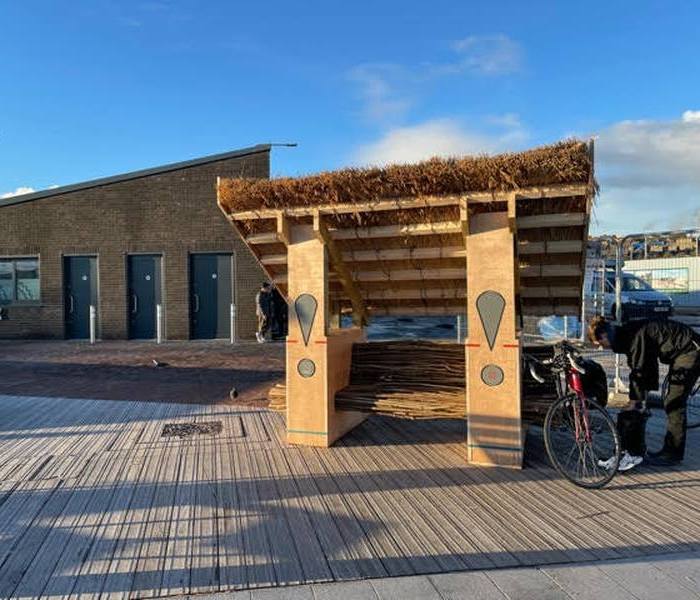
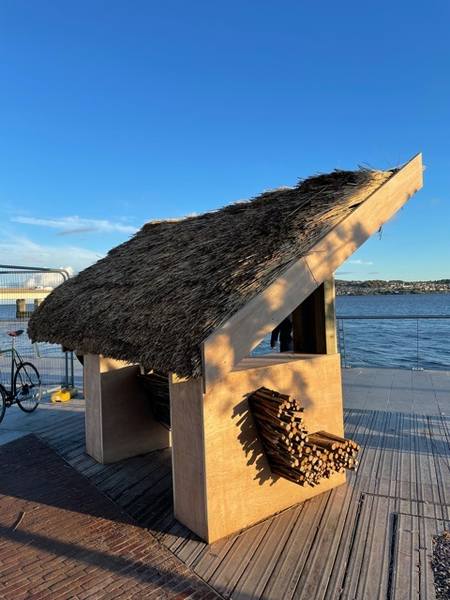
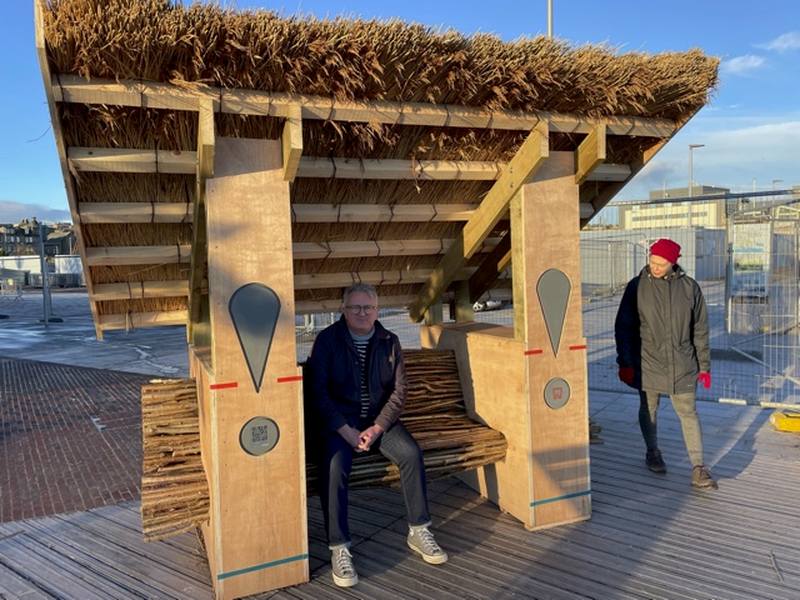
The Dundee Tide Marker as part of the Climate Change Conference (COP 26) 2021
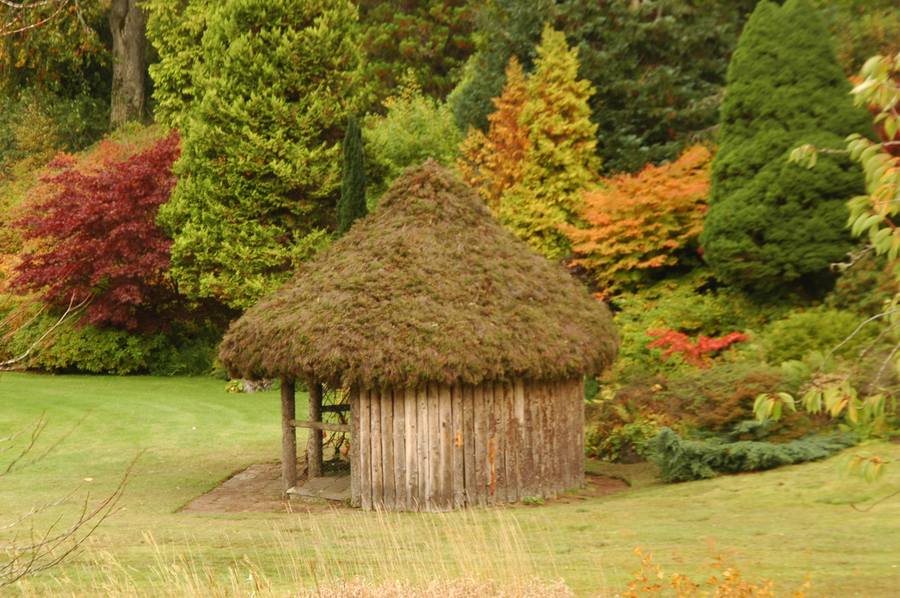
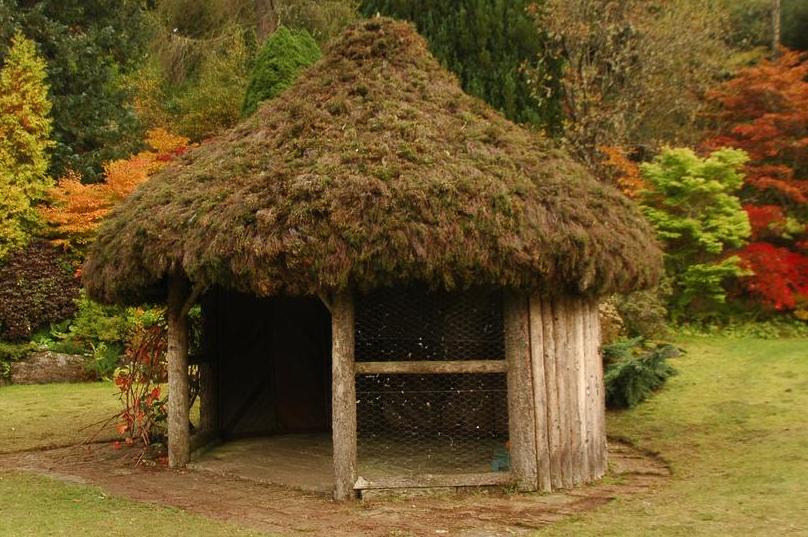
A heather thatch, when new
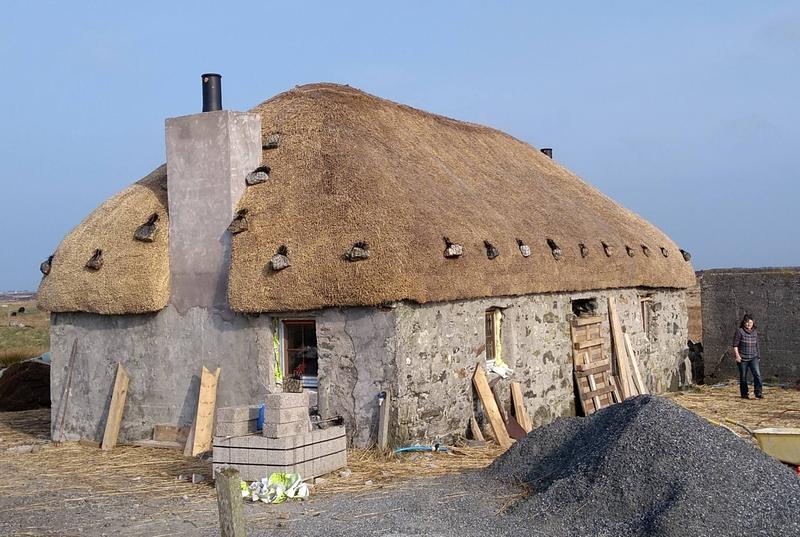
A cuilc thatch (Tay reed) completed
Thatching Training and Workshops
Training in Highland thatching is offered in a few different ways. In almost all cases thatching happens during the Highland thatch season of September to March.- I host one or two day short thatching experience workshops at my own home (on the wood barn) when enough students have requested it (6 to 8), once or twice a year. Covering by request: hazel gathering and cleaving, thatch material sourcing and gathering, scything (for those wishing to thatch in luachar), applying thatching to the barn roof with different materials and their respective techniques, use of tools. Workshops usually happen October to March.
The cost per day for workshops is £140. Email me to declare an interest.Training through on-job experience
- Real-job volunteering: some jobs are suitable for those wishing to try thatching or learn as they volunteer. These are not formal training sessions; they are commercial jobs where you are trained to do a few simple tasks, mostly on the ground, but sometimes on the roof / access. This will give you a sense of the thatching as a craft. The minimum commitment as a volunteer is 4 days. To take up this opportunity, email and I will put you on the Volunteers' Call List. The call is sent out usually a month or more in advance.
- Training is offered in a longer term, but part time, apprenticeship arrangement, as jobs dictate, whereby the trainee joins the team for a number of professional jobs, probably over two or three years. Each job is likely to be 7-28 days and happens usually between October and March. There are two aspects to the apprenticeship:
- The office and yard skills of how to estimate a job cost, manage staff, logistics, sourcing and maintaining specialist tools tools.
- The knowledge of the materials, gathering them, their respective fixing techniques, different vernacular styles in the Highlands and Islands.
During the job you are paid a minimum-wage hourly rate. Your labour is sold to the client at a higher rate, thus covering the training training costs of your apprenticeship, both in the field and in the yard. At the end of this apprenticeship it is expected you would be able to take on thatching work independently or continue as a full-pay member of my team, or both. If an apprenticeship is of interest, email me with a statement of introduction.
- Home owners / property managers can be trained on their own building as part of a (re)thatching job or maintenance. You are required to be present throughout the whole job. The cost of the job might be slightly higher to cover the additional time required to train at each task or skill, but it is a very cost effective way for owners to gain a good level of skill and confidence in maintaining their property, or being able to talk knowledgeably with a future thatcher about work. Alternatively, property managers / owners can volunteer as basic labourers, without training. This will lower the cost of the job, but skills acquisition is minimal.
- Paid labouring. For the gathering of materials aspect of a job, there is paid casual work available as either piece-work or national minimum wage, whichever is higher. The training is sufficient to gather the materials. As above, email to be put on the Call List.
Training workshops

Highland Thatch Consultancy
If you care for or are considering buying a thatched property in the Highlands or Islands you'll want to know more about the indigenous thatch styles. If you are applying for a HES grant to rethatch, then understanding the difference between Highland and Lowland / English thatch, traditional and non-traditional materials or styles will be important. Your thatched building might be listed and thus require a local style and traditional techniques and materials. I can advise on these.
I can conduct a thatch survey if you are looking to purchase a property or to appraise the life expectancy and problem areas of the current thatch, or for insurance purposes. Many home insurance companies require a thatch report every five years.
If you just need some initial outline help, a first phone call will cost you nothing! If you need a more worked up proposal, start with that free phone call or email and we'll cost it from there.
Videos
This video shows the sustainable harvesting of Cuilc, which is a thatch type suitable for Lowland style properties in Scotland and England.
Site created 2016. Updated 2025. All images copyright.